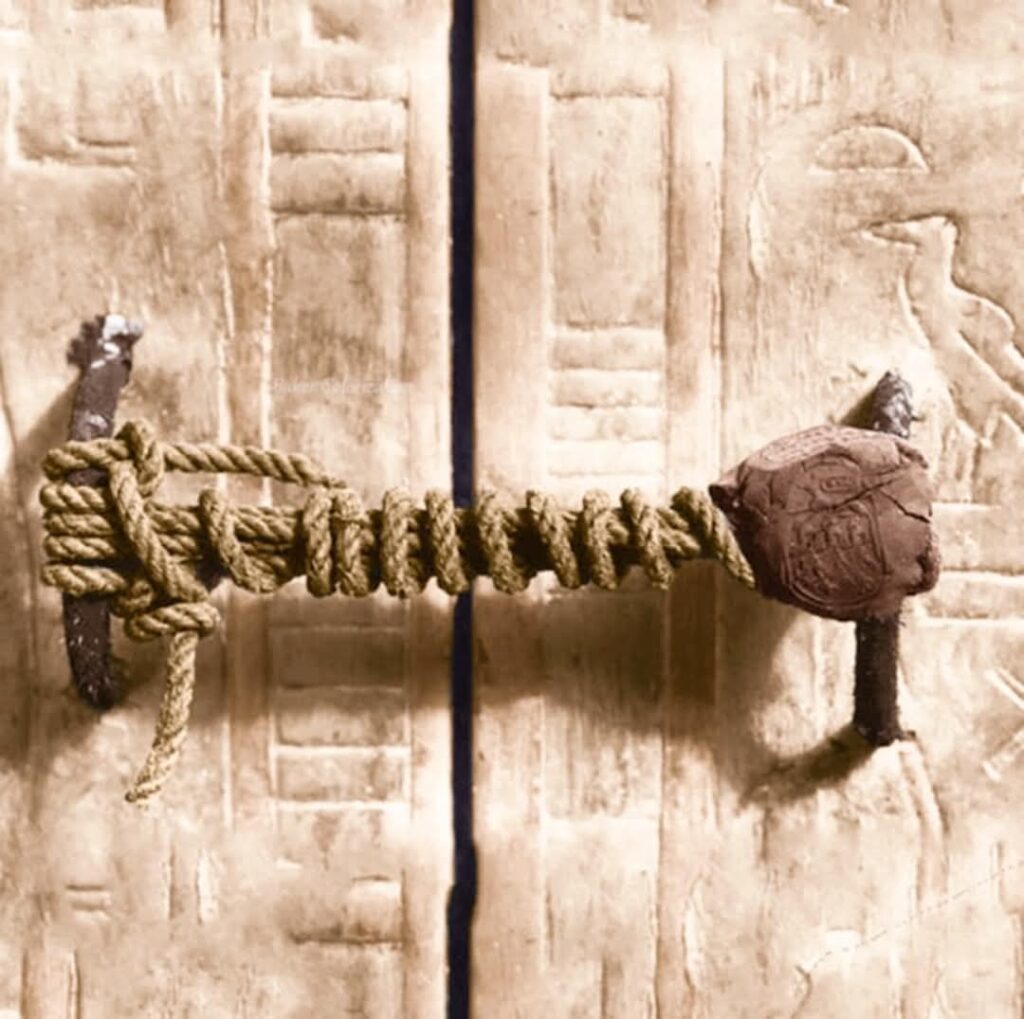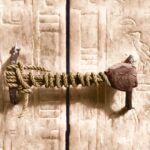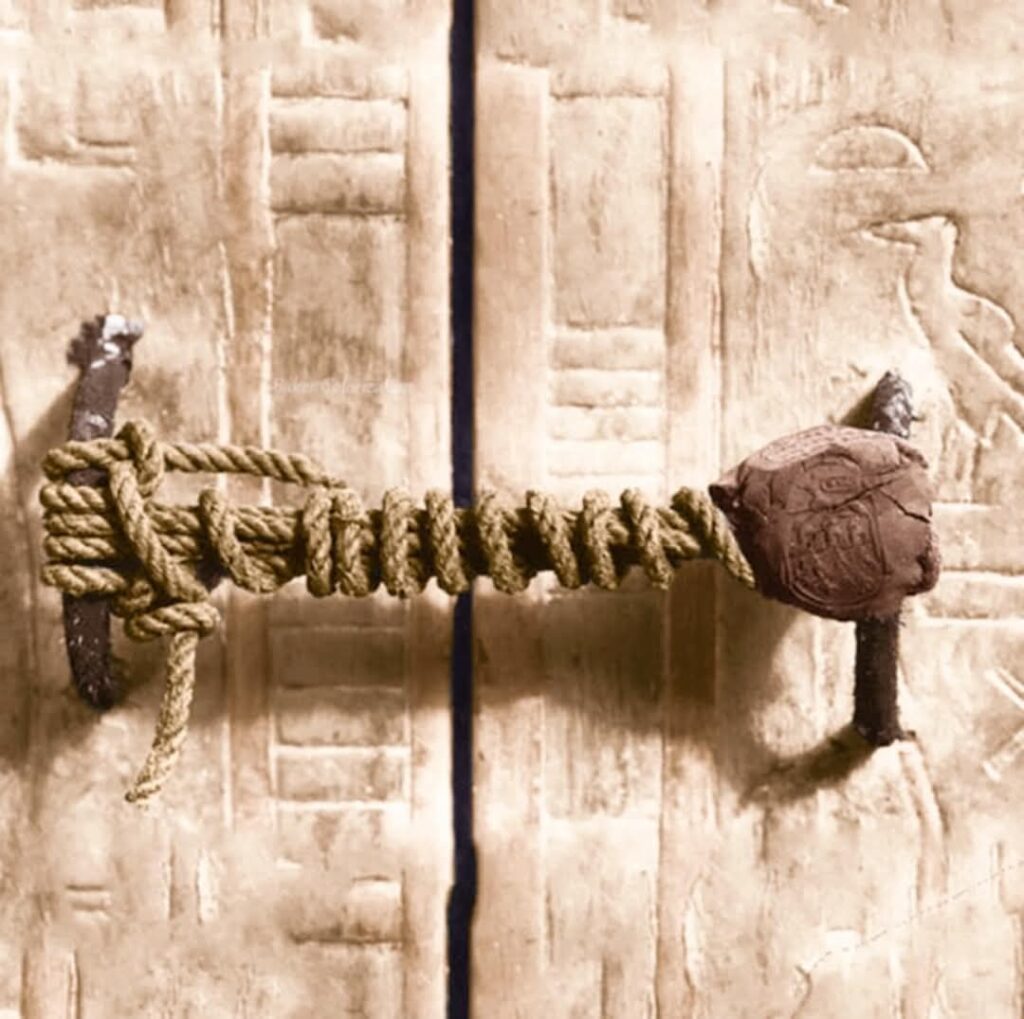

For over 3,000 years, the seal on a forgotten tomb in Egypt’s Valley of the Kings remained unbroken, preserving one of the greatest archaeological treasures of all time. In 1922, British archaeologist Howard Carter unearthed the sealed doorway buried beneath debris. The seal, depicting a jackal atop nine bound captives, symbolized divine protection and suggested the tomb had escaped extensive looting.

The tomb belonged to Tutankhamun, a boy king of the 18th Dynasty who ascended the throne around 1334 BC and ruled for just a decade before his sudden death in 1323 BC. Though his reign was brief and relatively unremarkable, the treasures buried with him were extraordinary: gilded statues, ceremonial chariots, ornate jewelry, and the now-iconic golden death mask. These artifacts provided an unparalleled glimpse into the wealth, artistry, and beliefs of ancient Egypt.
Despite its riches, the tomb was surprisingly modest for a pharaoh. Scholars believe it was originally intended for a lesser noble and hastily repurposed due to the young king’s unexpected death. Evidence of reused artifacts and incomplete decorations supports this theory.
The discovery captivated the world, shedding light on ancient Egyptian burial practices and their vision of the afterlife. Yet mysteries endure: What led to the boy king’s untimely death? Was it illness, an accident, or foul play? And why was his burial so unassuming compared to other pharaohs of his era?
The unbroken seal serves as a reminder of the secrets still hidden beneath the sands and the enduring allure of ancient Egypt.











Leave a Reply